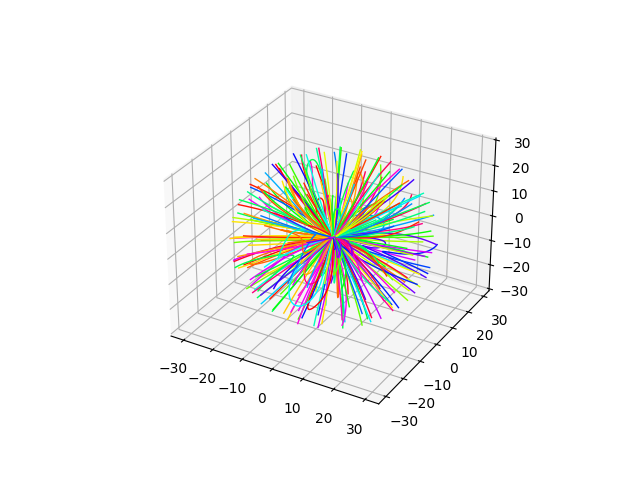Note
Go to the end to download the full example code.
Trace Forward & Backward#
Perform combined forward-backward tracing of magnetic field lines.
This example demonstrates how to use the run_fwdbwd_tracing()
function to trace magnetic field lines forward from a set of user-defined starting points.
import matplotlib.pyplot as plt
import matplotlib
import numpy as np
from mapflpy.scripts import run_fwdbwd_tracing
from mapflpy.utils import plot_traces, fetch_default_launch_points
from mapflpy.data import fetch_cor_magfiles
Load in the magnetic field files
The fetch_cor_magfiles() function returns a tuple of file paths
corresponding to the radial, theta, and phi components of the magnetic field data.
magnetic_field_files = fetch_cor_magfiles()
Define launch points using the fibonacci lattice method.
Here we generate 256 launch points at a radius of 15 Rs.
launch_points = fetch_default_launch_points(256, r=15)
Run backward tracing using the defined launch points
traces = run_fwdbwd_tracing(*magnetic_field_files, launch_points=launch_points, context='fork')
print("Geometry shape:", traces.geometry.shape)
Geometry shape: (3999, 3, 256)
The shape of the resulting traces geometry is an M x 3 x N array, where M is the
field line length (i.e. the buffer_size), N is the number of launch points
(here 256), and the second dimension corresponds to the radial-theta-phi coordinates.
The utility functions provided in utils are designed to work with this
contiguous memory layout for efficient processing and visualization.
Plot traces using the plot_traces() utility function.
Here we assign each trace a different color (using a HSV colormap) by passing in the
colors keyword argument.
rsample = np.random.random_sample(size=launch_points.shape[-1])
colors = matplotlib.colormaps['hsv'](rsample)
ax = plt.figure().add_subplot(projection='3d')
plot_traces(traces, ax=ax, colors=colors)
plt.show()

Total running time of the script: (0 minutes 0.595 seconds)
